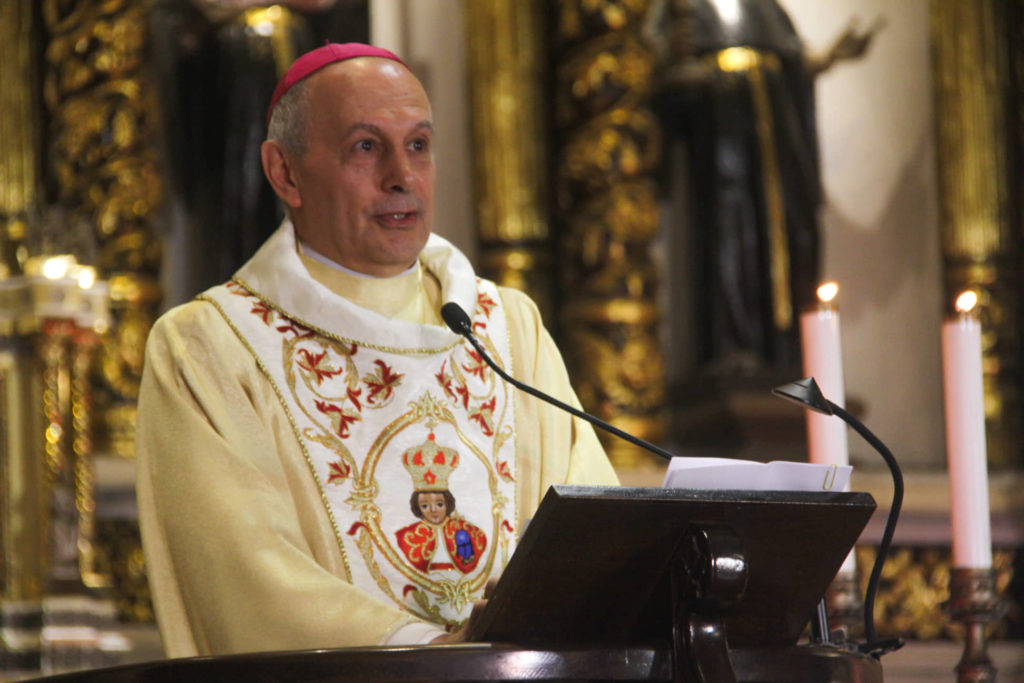Papal Nuncio: Santo Niño de Cebu is an image of faith brought by free will

Archbishop Gabriele Giordano Caccia, Papal Nuncio to the Philippines, celebrates Mass at the Basilica Minore del Santo Niño for the 500th anniversary of the arrival of the Señor Santo Niño in the country. | Gerard Francisco
CEBU CITY, Philippines — The image of the Santo Niño de Cebu is the image of faith from free will.
This is the statement of Archbishop Gabriele Giordano Caccia, Papal Nuncio to the Philippines, during the launching of the 500th anniversary of the arrival of image of the Señor Santo Niño in the Philippines.
Amid counter-narratives that the image of Santo Niño was an image of colonialism, the Papal Nuncio said that the first Filipino Christians, the Cebuanos, were shown the image of the Santo Niño only after they were baptized.
“Santo Niño was not the reason why the people believed. The people believed that was why there were given the Santo Niño,” said the prelate.
Caccia told the story of how Ferdinand Magellan and his crew were able to indoctrinate the natives in the dawn of 1521, almost 500 years ago.
He said that the captain of the ship told the natives to be baptized to Christianity because “they wanted to” and not because of fear or because they saw the Spaniards as powerful people.
This acceptance of the faith was the indoctrination of the native Filipinos, from which an entire culture emerged.
The free will of the native Filipinos rooted Christianity into its culture, and kept their faith to the image of the Santo Niño that was left with them after the first set of Spaniards left when Magellan died.
Read more: Pomarejos: 2K people now at Basilica for 500 year celebrations of arrival of Santo Niño
Historian, Fr. Arnel Dizon, OSA, the main presentor of the conference launching the Santo Niños 500th year, explained how the image of the Santo Niño remained with the Cebuanos after Magellan’s troops left.
Dizon said, the Santo Niño became one of the anitos, or the dieties of the native Cebuanos. They worshipped the Santo Niño to pray for rain and abundant harvest.
“The Santo Niño soon become the most powerful anito of the natives,” said Dizon in his presentation.
Dizon said that upon the return of the Spaniards and eventual colonization in 1563, they found the Santo Niño among the Cebuano communities and this helped them settle in the Philippines.
Fr. Emilio Quilatan, OAR, one of the reactors of Dizon’s presentation said the Santo Niño and the Catholic faith made the natives of the Philippine Islands the Filipinos they are today.
The culture and the faith that binded the country together into one nation began in the solid faith of the Santo Niño and of the teachings of the Church.
“We are Filipinos because of Santo Niño,” said Quilatan. /dbs
Disclaimer: The comments uploaded on this site do not necessarily represent or reflect the views of management and owner of Cebudailynews. We reserve the right to exclude comments that we deem to be inconsistent with our editorial standards.
